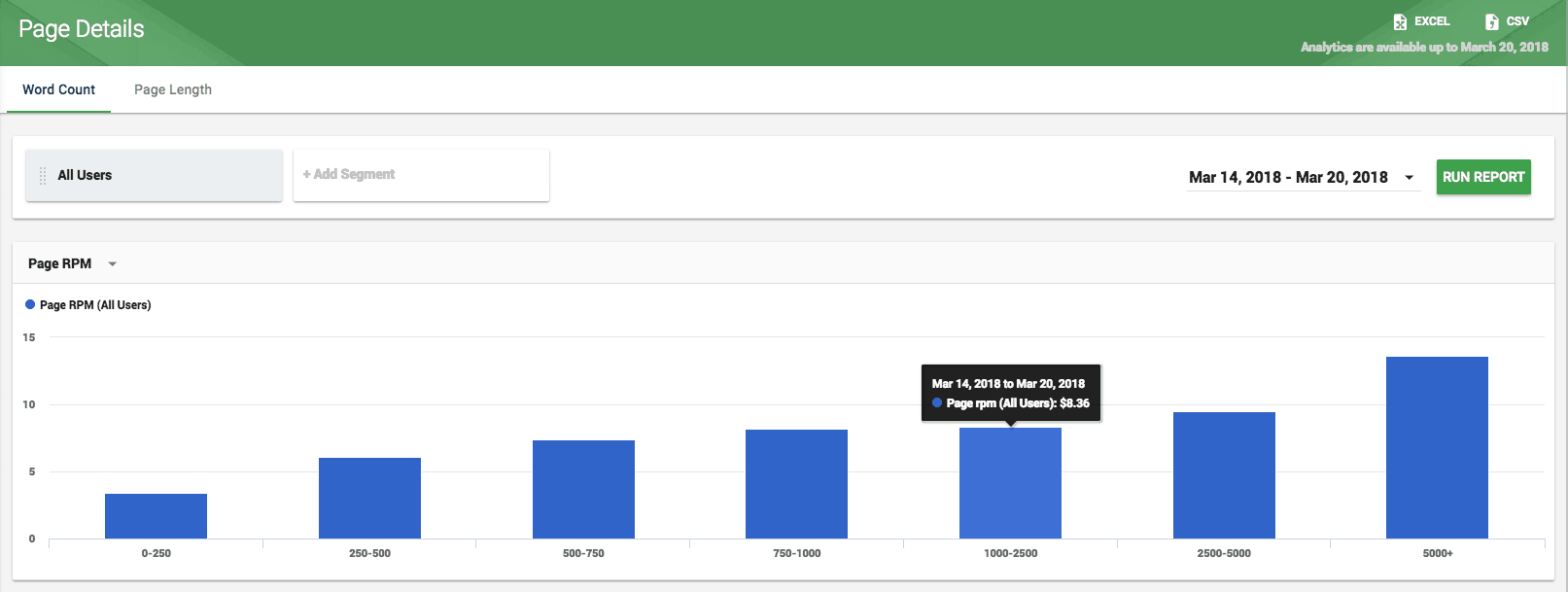Make Money From Websites Using These 3 Insights
Being an online content creator has never been easier. With the development of easy-to-use publishing platforms and simple lightweight technologies, publishers have mass potential at their fingertips. However, understanding how to make money from websites in this environment is becoming growingly complex.

Understanding all the different ways that websites make money can help content creators shape and develop strategies that fit their goals, audience, and bandwidth.
Unfortunately, executing on these strategies is becoming harder and harder as the platforms, advertisers, and the conglomeration of major media sites grow in their sophistication.
Below, I will highlight 3 rarely discussed insights that will help content creators of all types, kinds, and skill levels improve the way they make money from websites.
1.) Where your best website revenue comes from
This is sort of an odd insight but one that must be carefully contemplated. The problem is that it can often be hard to determine which content monetization strategies are actually delivering the highest amount of revenue. There are a lot of potential options:
- Programmatic ads (display ads)
- Affiliate links and ads
- Member subscriptions
- Donations
- Direct deals with advertisers/sponsors
- Directly selling products or content (e-books, courses, etc.)
- Crypto-mining (seriously this is a thing — but not recommended)
Furthermore, it is always important to have some form of understanding of how these monetization techniques affect your visitors — and the long-term health of your traffic and website revenue.

Example: What if you earn $4 per 1,000 visitors for pages with affiliate ads on them vs. $6 per 1,000 visitors with pages with programmatic ads on them? Both pages earn revenue, but the pages with programmatic ads earn 50% more.
Note: If you do have affiliate links on your site, make sure to change your affiliate links to rel=sponsored like Google wants before March 1, 2020
That would make deciding between those two really easy; however, getting that data in the way I have outlined takes a bit of thoughtfulness on the part of the content creator.

Measuring different strategies by looking at EPMV by landing page
One of the easiest and most effective ways to understand how these different approaches might be affecting revenue is to look at the total session revenue generated from these sources by landing page.
Why do this? This will show you how much revenue is earned for a session (a complete visit from start to finish) from visitors that land on a specific page. This means you can evaluate the monetization strategies effect on things like bounce rate and pageviews per visit AND total revenue per visitor/session (EPMV – earnings per thousand visitors).
How do I do this? We talked about it in pretty great detail here; however, I will do a quick overview in the numbered steps below.
- Select a monetization strategy you want to test
- Implement it on the site for a short period of time
- At the end of the period, look at the total revenue from the chosen monetization source
- Now, take the total earnings divided by (Visitors / 1,000) during the same period
- This will give you your EPMV (total session revenue) for that strategy
Example Calculation:
- In March, your earnings were $1000 (AdSense) + $5000 (ADX) + $500 (Native Ads) = $6,500
- March Sessions – from Google Analytics – were 1,000,000 visits.
- EPMV was $6,500/(1,000,000/1000) = $6.50 EPMV
Using this approach you can see by landing page how those EPMVs might differ; as certain pages may end up performing better with different monetization strategies.
Put this in context of the level of effort and resources necessary to make those strategies work. For example, a direct advertising deal or sponsorship may deliver slightly more revenue — but if you have to pay for a salespersons salary, time, and more to get that deal done — did you really make more money from that strategy?
Ultimately, it is likely a combination of different strategies for all publishers. This mix of ads, direct deals, subscriptions, and other sources will be different for every publisher because the audiences are different for every publisher.
This same principle applies to every page of your website. Every website makes money differently from each visitor and each page.
Understanding EPMV (aka session revenue) for every landing page can help you optimize revenue by …
- content monetization strategy
- by page
This is a core way to optimize website revenue that publishers often overlook — or deem as too complicated or involved, but it couldn’t be easier (publishers using Ezoic can use the free Big Data Analytics tool to evaluate and measure this automatically).
2.) Measure website earnings by word count
One of the most fascinating things I’ve learned in the past few months is the dramatic impact that word count can have on Page RPM (page revenue).

In the image above you can see that revenue by word count is linear for pages on this website; however, in our recent study on word count, we learned that every website is different in this category.

In another website’s example, we learned that there was one specific word count that generated far more revenue than others.
The end conclusion of our study was that this ends up being really different for different kinds of websites. Even websites that deliver the same kinds of niche content see that word counts and revenue line up differently.
What if you discovered that you were spending tons of content creation time on long-form content — only to discover that your articles with 500-700 words actually generated the most revenue!
This is exactly what happened to a publisher I know, and they completely changed elements of their publishing strategy to support what the data was showing them about their audience and their revenue.

You can do this easily by calculating page revenue for articles with different word counts and then comparing the results.
This can also be automatically calculated, compared, and analyzed in Big Data Analytics; which is a free tool on the Ezoic platform.
3.) Revenue by “time to interactive” page speed
I’ve gone into a lot of depth on page speed in previous articles. The quick summary is that most website owners and publishers don’t properly measure page speed (they use free tools which aren’t good for actually measuring page speed) and don’t fully understand the best ways to impact it.

What may be even more important than improving page speed is understanding exactly how it may be affecting your revenue!
Time to interactive is one of the most important page speed measurements. It measures how quickly the content loads and the visitor is able to physically interact with and navigate the page effectively.
There are some really strong correlations between time to interactive and revenue. Seeing what percentages of your revenue are generated from different load times can be important to understanding the relationship between something like the value of ad earnings and your page load time.

For Example: What if you learn that you are generating the most amount of revenue from pages with a time to interactive of 1-5 seconds; however, the majority of your visitors are seeing a time to interactive of 5-10 seconds. This would mean that there is huge potential if you can increase the time to interact on the pages loading in 5-10 to at least 1-5.
This can also help publishers who may be wasting a lot of time trying to improve page speed by very small amounts. If you learn that the majority of your visitors aren’t bouncing with a time to interactive of 1-5, and the majority of your revenue is already coming from that particular load time, it might not be worth wringing your hands about improving page load speed on these pages all that much.
This is another really cool calculation that can be automated and reviewed easily using Big Data Analytics for free on the Ezoic platform.
Putting this in context of how websites make money
There are a lot of ways for websites to make money. Every site is different, and what’s more, every visitor and page is different.
This means that data is paramount in optimizing content monetization strategies on your site’s pages. Measuring which sources are the best alongside metrics on your actual content (word count) and website infrastructure (speed), can offer huge growth potential.
Typically this kind of granularity can see publishers earning exponential increases in the amounts of money they earn from websites. Additionally, this kind of thoughtful optimization generally lends itself to improvements in quality traffic as well; as publishers who go into this detail are usually aware of how these things are impacting user experiences.
Questions, thoughts, additional ideas. Share them below.

